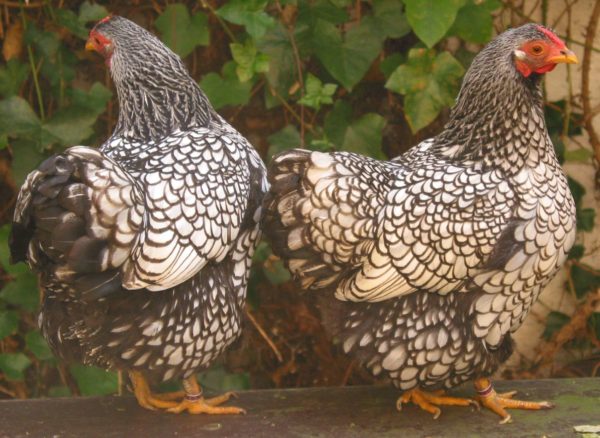Currently, there are many different breeds of chickens of one or a combined direction of productivity. Selection selection of successful breeds was carried out in ancient Egypt. And since then, the process of gene modification has been actively developed. Today, breeders are able to get a chicken that meets the required productive and decorative indicators. In this article we will talk about the egg-bred pedigree birds, what they are and their characteristics.
Table of contents
The best breeds and types of chickens
When selecting a suitable breed, it is easy to get confused and make the wrong choice. Therefore, in order to make the right decision, one should thoroughly approach this issue and gather the necessary information.
Yaytsenosky legorn
Legorn is a popular egg-bearing breed in the countries of America, Europe and Central Asia. The bird has deserved such popularity due to adaptive abilities and high egg production. Legorn is a highly productive breed, therefore it is grown both in large enterprises and in domestic conditions. The bird is calm and friendly, quickly getting used to the owner. Easily tolerates temperature extremes.
As for the deficiencies, in Legornov, in the second year of life, egg production significantly decreases. Experienced farmers and poultry farmers advise to change the bird every one and a half years. But, due to the fact that this breed has no incubation instinct, eggs have to be incubated in an incubator, thrown to other chickens or to buy new young.
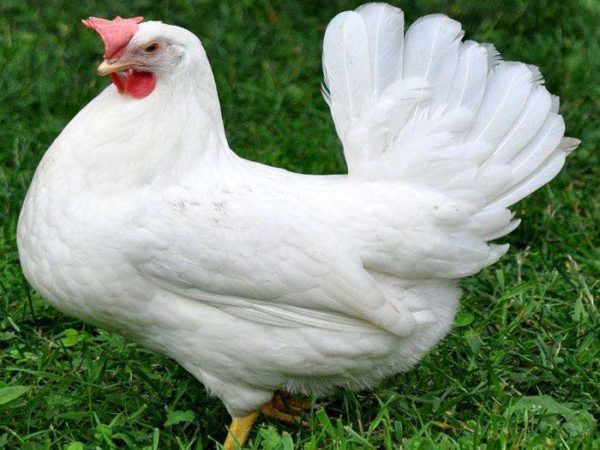
Butcher Brook Brown
Loman brown - a popular meat-breeding German breed of chickens, originally bred in Germany. Although the bird is of the combined type, it gained its fame thanks to its high egg production.
Benefits:
- Eggs are large and strong, up to 65 g (at the beginning of laying eggs are small). With high-quality feeding, about 300–320 eggs are carried annually;
- Survival rate of a newborn bird is almost 100%;
- Unpretentious to the conditions of detention. Quickly acclimatize and get used to the environment.
- Puberty reaches 135 days, and grows to 161 days;
- They begin to rush to the fifth week of life (the peak of intensive masonry is 160-180 days).
Disadvantages:
- After 80 days of intensive laying, egg production is reduced (it is necessary to renew the bird);
- Reproduction is possible only by breeding, as crosses in "home conditions" are not divorced.
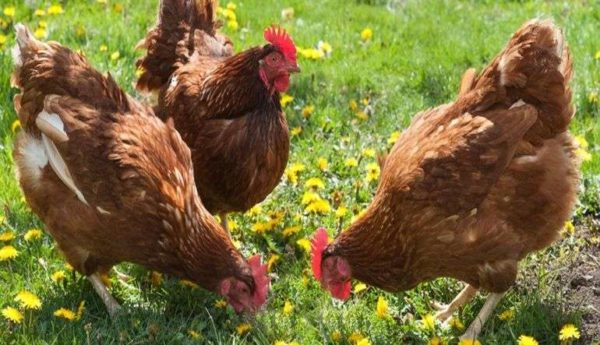
Egg Haysex Brown
Large breed of hens Hisex Brown brown color of the egg direction. To the environment Hisex Brown adapts quickly, but despite this, the bird requires good care and a large area for walking.
Benefits:
- Highly productive breed (300-320 eggs);
- Low feed intake (10 eggs - 1.4 kg);
- Strong eggshell;
- Survival rate of 98%;
- Adaptability.
Disadvantages:
- He has no incubation instinct;
- Egg production is not transmitted to the next offspring when crossed with another species;
- A lot of free space is required;
- The bird is productive only with proper and balanced feeding.
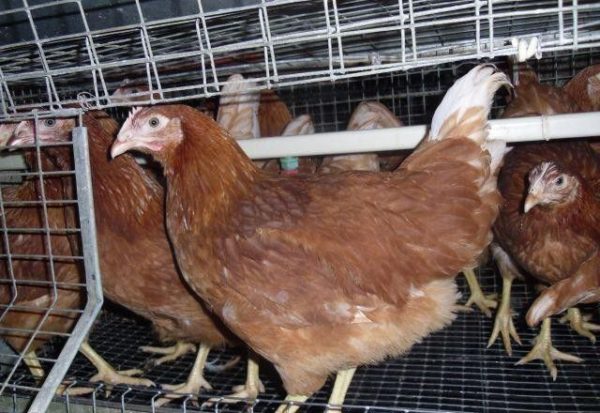
Domestic Chicken - Andalusian Blue
Andalusian blue - an exotic breed, belongs to the hens of meat and egg direction. In chicken houses, chickens are popular because of their appearance, they are bred in small private areas for decorative purposes.
Adult bird weighs 2 -2.5 kg. In the first year of life, egg production is 180 pcs. weighing 60g.Puberty occurs at six months, the survival rate of newborns is 93%, and in adults - 87%.
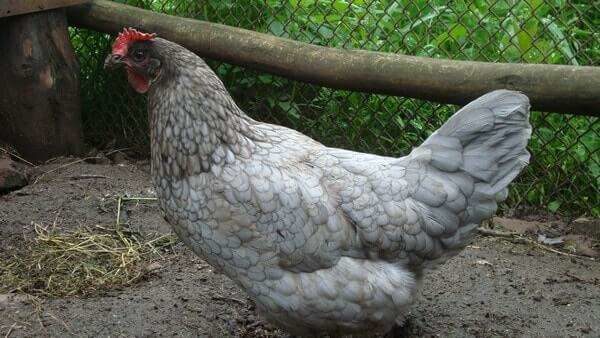
Brekel
Brekel is one of the very first representatives of egg-laying hens. The bird has good immunity and good health. The meat tastes like a game, and this is appreciated. Breed is large, roosters reach in weight up to 2-2.75 kg, and chickens - 1.75-2.25 kg. The color is golden or silver.
Benefits:
- High egg production rates;
- Energetic - they can walk around the territory all day long in search of food;
- They get along with other domestic animals;
- Chickens quickly feather and gain weight;
- Unpretentious to external weather conditions.
Disadvantages:
- There is no maternity instinct;
- Does not transfer closed spaces and cells.
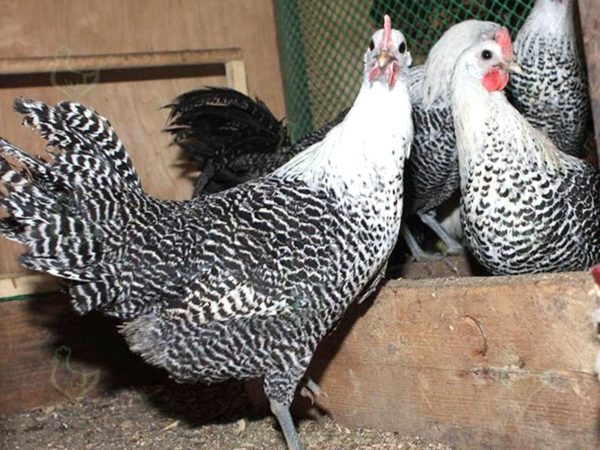
Hamburg
The Hamburg breed is a decorative and sports variety of hens. The bird is productive and hardy, white with black spots of color. Perhaps the content of two or more roosters, as they are friendly and do not attack each other. The weight of an adult rooster is 2-2.5 kg, and the hen is 1.5-2 kg.
Benefits:
- Easily adapt to the new environment;
- It is advantageous to breed at home - good productivity with a small feed intake;
- Delicious meat;
- High nutritional value of eggs.
Disadvantages:
- There is no maternal instinct;
- Short period of maximum egg production.
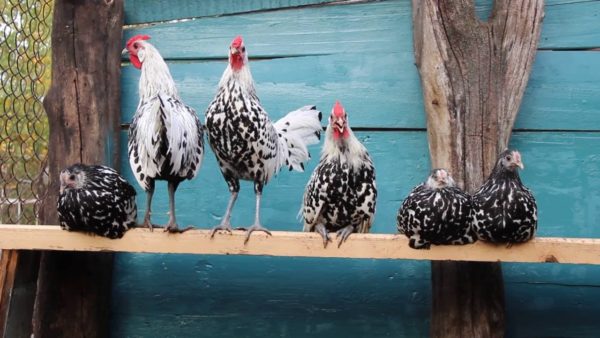
Italian partridge
The Italian partridge (brown or brown Leghorn) is one of the first birds of the egg direction. Thanks to the excellent genetics that have been handed down from generation to generation, the layers have high egg production and survival rates, as well as strong adaptive abilities. Chickens are common in Russia and European countries.
Most farmers and poultry farmers who breed this breed respond well to it. Especially distinguish the fact that chickens are calm in nature, unpretentious to the way of keeping, and have greater productivity.
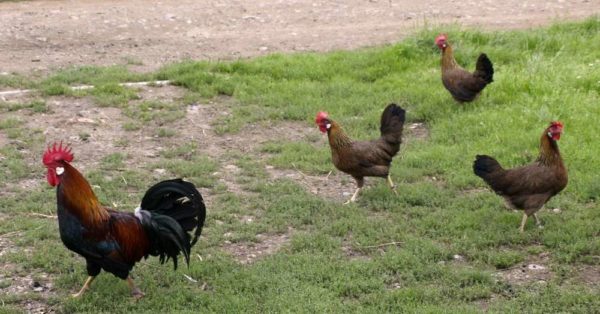
Minorca
Chickens Minorca is a decorative look that is notable for its amazing color - it is black with iridescent green shades.The comb of the rooster is interesting, a little bit like a crown, and in the hen it is small, beautiful and slightly tilted. The lobes are large, white.
Benefits:
- Nestlings grow rapidly and have a high survival rate;
- Begin to rush early - at 6 months of life;
- Oviposition all year round;
- Eggs are large, strong and nutritious;
- Friendly character.
Disadvantages:
- The bird is shy, therefore it is difficult to approach it;
- Poor tolerates high humidity and low temperatures;
- Does not incubate eggs.
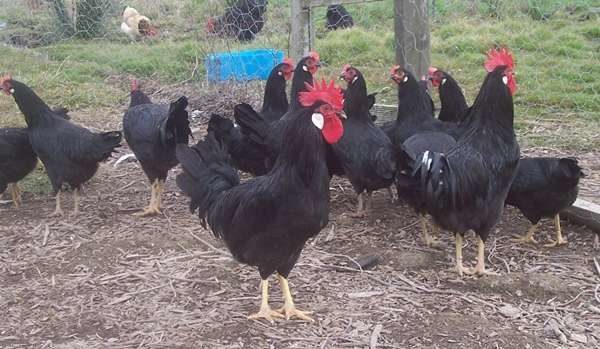
Egg breed I-33
B-33 - a type of mini-egg direction created in Russia. Nowadays, they are becoming more and more popular because they are great for small households.
Benefits:
- Chicks grow quickly;
- Well digests various food;
- Feels great in a cage or aviary;
- They carry large eggs relative to their body size;
- Do not dig the ground;
- Highly profitable;
- Character calm.
Disadvantages:
- In wet weather, because of short legs, chickens, touching wet ground, are at risk of getting sick;
- Weak spot - paws, which are recommended to be periodically checked;
- You can not cross the birds with different color, so they are kept in separate cells.
Ushanka
Ushanka or Ukrainian Ushanka - distributed in southern Russia and Ukraine. Often divorced for decorative purposes due to the bright color and interesting appearance. The weight of adults is: rooster - 2.8-3 kg; layer - up to 2 kg.
The number of Ushanka has significantly decreased lately, as the productive figures are below average, and mainly private and collection farms are engaged in breeding.
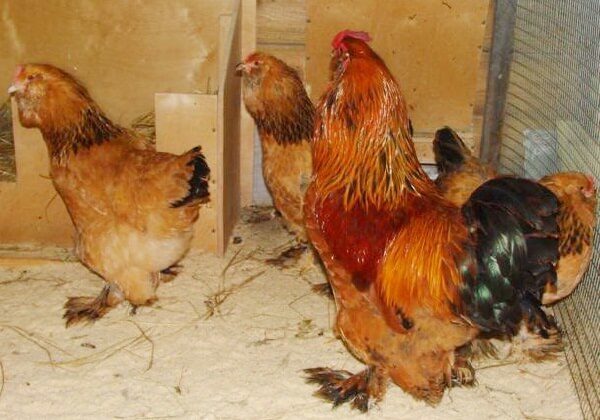
High Line
High Line is a well-established bird with no serious flaws. Calm and unpretentious, friendly attitude to other agricultural animals. Thanks to good immunity and high viability, the chicken is considered highly profitable.
Experienced farmers point out that High Line chickens are well bred both in large chicken farms and in small domestic areas. Separately, it is worth noting that this bird must be vaccinated on time, otherwise it is impossible to avoid the almost complete extinction of the population. As for the conditions of detention, there are no individual requirements.
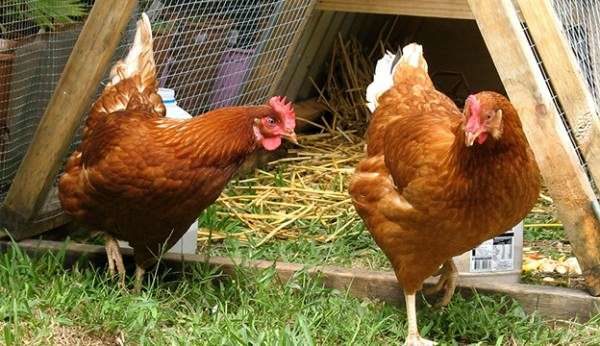
Haysex White Breeding Layer
Hisex White stands out among the other breeds of the egg direction in that the low cost of feed corresponds to the high egg production of chickens.
Benefits:
- Puberty reaches the 20th week of life;
- Survival rate of young stock 96%;
- The weight of one egg is up to 70 gr.
Disadvantages:
- When crossed with other breeds, productivity decreases;
- Large territory for walking;
- Ventilated coop with constant lighting.
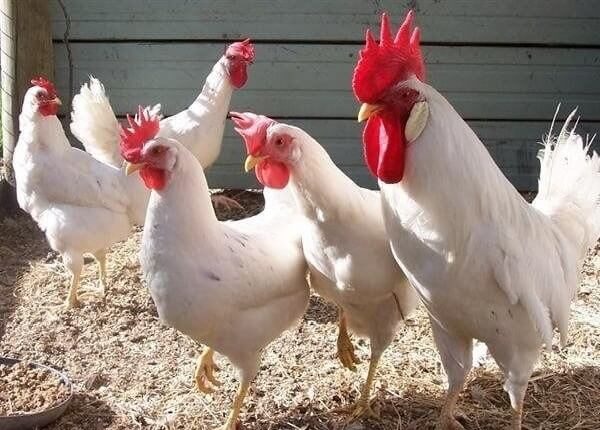
Shaver
Shaver layer hens are well known for their high egg production and low feed intake. The breed is one of the most calm and friendly birds that distinguishes it from the rest of the crosses.Was withdrawn in Holland. Significant flaws or deviations are not noticed.
Benefits:
- High immunity;
- Laying time is 80 weeks;
- Young animals quickly gain weight;
- Excellent taste of eggs.
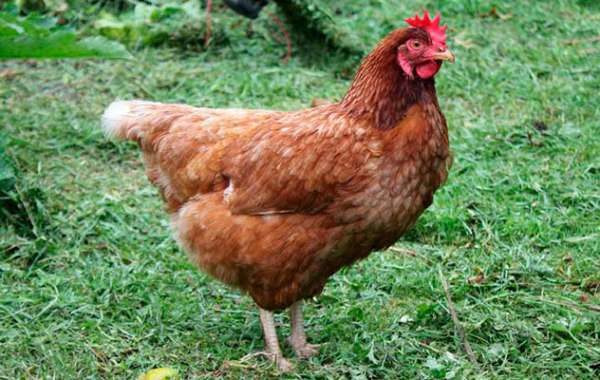
For all the time of breeding work about 50 breeds and crosses of hens of the egg direction were created and improved: they all have their own characteristics and productive indicators, allowing to choose a more profitable breed.
